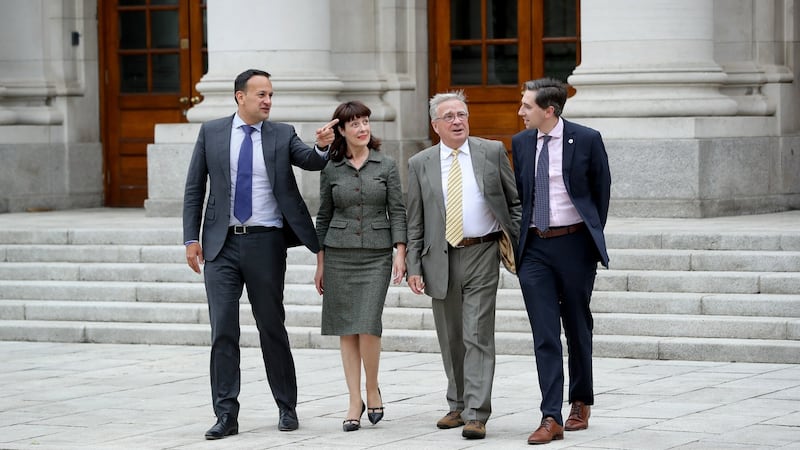Announcing Laura Magahy's appointment as executive director of the Sláintecare health reform project this week, Taoiseach Leo Varadkar described her as "one of Ireland's leading and most innovative strategic project directors".
He said she had a wide range of experience in devising and leading complex and challenging national initiatives and major projects.
And he had a point. Magahy has been involved in several high-profile projects. Some of these attracted significant controversy which her latest role will undoubtedly resurrect.
In the early 1990s, Magahy ran the €1 billion redevelopment of Temple Bar as one of the the youngest ever heads of a semi-State body.
A biography of Magahy published by the Department of Health after her appointment to the Sláintecare role omitted reference to the sports campus project at Abbotstown in Dublin – known as the "Bertie Bowl" – which proved highly contentious.
Magahy's company provided executive services to the Sports Campus Ireland project. However, when it emerged that the company was receiving €127,000 a month, there was a huge outcry including a hearing at the Dáil Public Accounts Committee. The fee was later reduced to €57,000.
Merit
The then comptroller and auditor general suggested that her company’s original contract for the project could have been worth up to €12 million based on estimates of what the Abbotstown project might cost.
Magahy defended her record before the committee, saying she did not “do public projects for the money” and insisting she had won the contract on merit.
Magahy at one stage was involved in a three very big public development projects – the sports campus, the €280 million redevelopment of the Mater hospital and the Digital Hub in Dublin’s Liberties area.
However, it was her more recent business interests, particularly with the HSE, that raised eyebrows among some Opposition politicians over the last day or so.
The Irish Times reported last year that M.CO Projects, which Magahy co-founded in 2000, had been paid paid more than €2.2 million in 2016 for consultancy on a wide range of projects on health service reform.
Official records showed that the company received €424,000 for work on the HSE’s national communications reform programme, €235,000 for a community healthcare organisation programme and more than €173,000 on the children’s hospital group programme among others.
Resigned
On Friday, the Department of Health issued a second statement regarding her appointment . It said Magahy had resigned her position as managing director of M.CO (effective from September 1st next) “and will not be returning”.
“She will have no future beneficial involvement in the company. She is relinquishing all control over the future business of the M.CO from the date of her appointment. This had already been agreed with the department before she accepted the role.”

The department said that over the last 28 years, Magahy had led some of Ireland’s most significant and transformational public-sector projects.
She brings an extensive track record in project management but Sláintecare will undoubtedly be Magahy’s biggest challenge given that it represents not a development but rather a concept to radically change the way healthcare is delivered in Ireland.
Sláintecare proposes the introduction over time of free GP and hospital care. There would also be reductions in prescription charges, and to the amounts people had to pay themselves for drugs and medicines. In addition, the plan envisages universal palliative care being put in place along with improved dental services and greater access to homecare services.
Single tier
At its core Sláintecare would eliminate private medical practice in public hospitals, creating a single-tier system. The 10-year programme is forecast to cost €2.8 billion as it moves the focus away from hospitals towards primary and social care.
The plan also envisages the Government providing a once-off “transitional” investment of about €3 billion to pay for necessary capital investment.
Magahy and her team will be tasked with drawing up an action plan to put in place the Sláintecare reforms.
However, the Government has yet to publish its own long-awaited implementation plan amid widespread speculation about rows between the Department of Health and the Department of Public Expenditure over funding.
When she take up her post Magahy is expected to report to Department of Health secretary general Jim Breslin and be accountable to Minister for Health Simon Harris.
It is likely that in her new role Magahy will have been promised the strong support of the Taoiseach and Ministers in her attempt to drive healthcare reforms. The transformation envisaged under Sláintecare will also involve huge industrial relations issues.
It is unclear at present who will be in the driving seat for any negotiations on a the deal with doctors which would be necessary to implement the plan.
Would it be Magahy, the HSE , the Department of Health or the Department of Public Expenditure?
What could well be Magahy’s toughest project to date lies ahead.















